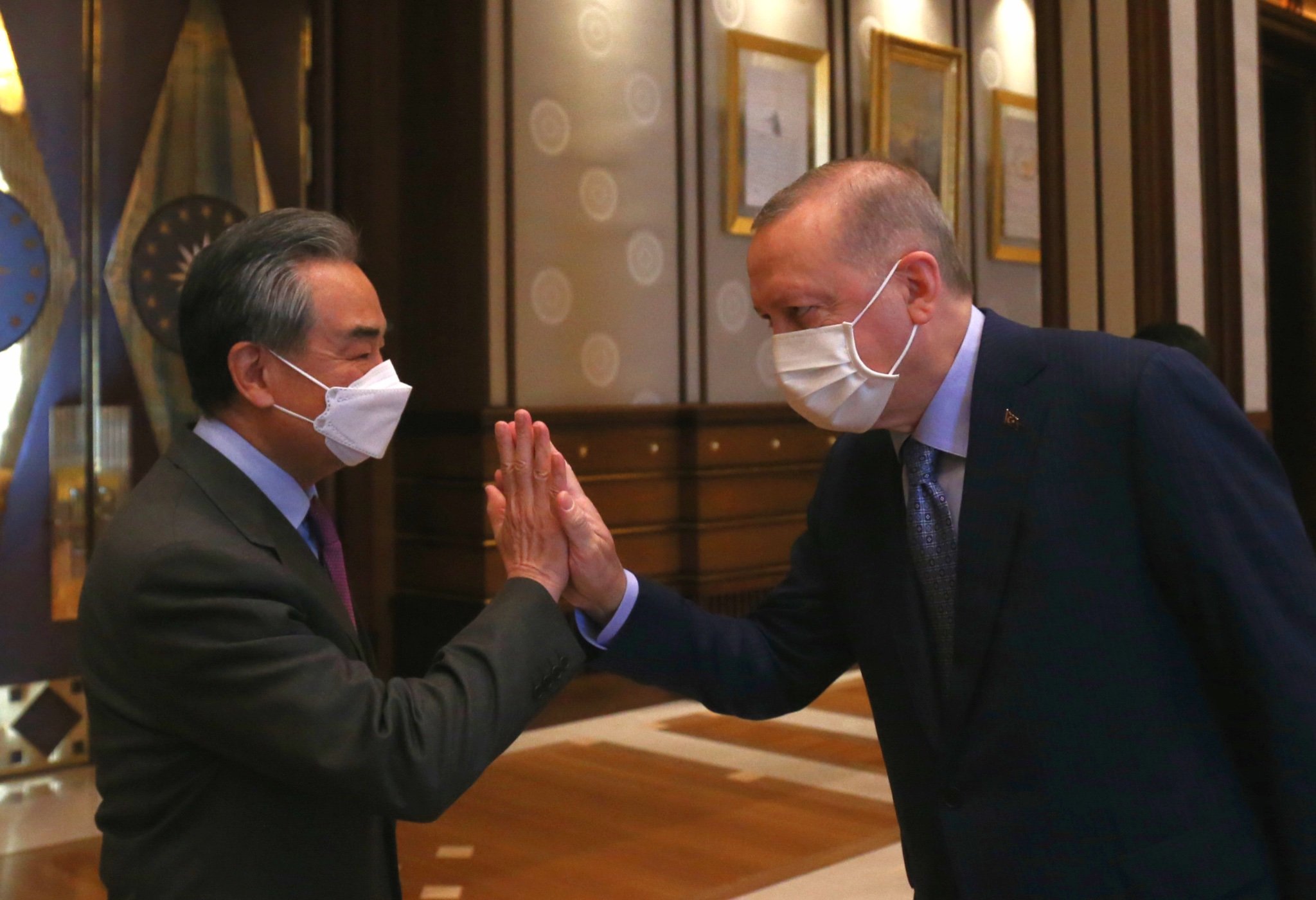The EU’s expectations and scenarios.
The EU’s expectations and scenarios.
By Gökalp Erbaş
There is much debate about the possible economic effects of Europe’s rearmament. When examining the discussions on this topic, the most critical question seems to be: Has there been a structural change in the economic function of the arms industry from the past to the present? The arms industry actually works to produce security, which is a public good. All the tangible outputs of this industry, along with the social and political costs and benefits related to defense, fall under this umbrella. Despite its various side effects, security production has never been one of the core economic instruments of a free-market economy. The transition to armament and a war economy at the highest level – even if Europe were to achieve its goals, it would still be far from a war economy historically – has taken shape as a necessity for public security on one side and the imperative of imperialist expansionism on the other. The positive economic outputs of armament have remained controversial even for recent history. In today’s political, social and military landscape – characterized by constant regional conflicts and embryonic poles – will security production yield different outcomes? What do the economic experiences of armament indicate? What does Europe hope to gain from armament? And, most fundamentally, can Europe achieve this?
The US experience with armament
Briefly touching on armament in the US is important because it serves as a ‘good example’ for Europeans. While Europe is now facing a comprehensive armament of this scale for the first time in decades, for Americans this has become the norm. The fact that the United States has been continuously engaged in arms buildup since the Second World War, has been a world leader in this regard, and has undergone its economic journey in parallel with this actually creates difficulties for us in assessing the relationship between the two. It carries the risk of evaluating positive correlations as cause and effect, and it may prevent us from recognizing the uniqueness of a country that was first one of the two poles of the Cold War and then the undisputed sole superpower. For this reason, it does not make much sense for Europeans to emphasize the golden age of the United States when discussing the economic outcomes of their armament. It does not seem reasonable for Europe to expect similar gains under nearly entirely different conditions.
The most significant characteristic of armament is its creation of large-scale government spending. However, the two most important features that distinguish it from other expenditures are, first, that it creates more private accumulation for capitalists than large-scale government spending such as public services, and second, that the products it creates quickly disappear from the market – thanks to US military interventions – and thus avoid the trap of long-term declines in profitability experienced by other sectors. However, armament does not always seem to yield positive economic results for the United States. While the high levels of military spending in the 1950s and 1960s coincided with years of high profitability and low unemployment, the period between 2006 and 2010 coincided with a recession. (1) In fact, this aligns with the global shift in the economic impact of military spending during the neoliberal era. While there was a positive correlation between profitability and military spending in OECD countries between 1963 and 2008, no significant correlation was observed between 1980 and 2000 (Elveren & Hsu, 2015) (2).
Moreover, the revenue generated by the arms industry does not always go towards research, development, and investment under market conditions. A Pentagon study revealed that between 2010 and 2019, military contractors distributed nearly three-quarters of their financial output directly to shareholders. In other words, the priorities of arms manufacturers remain unchanged even in the US system, which is much more established, integrated, and spends ten times more on R&D than the entire European Union. Europe’s task appears challenging from this perspective as well.
The EU’s expectations and scenarios
Although the current political environment in Europe does not lend itself to homogeneous assessments of ‘Europe’s expectations,’ we can consider the expectations entrenched in the EU to be influential across the continent. The main issue Europe is seeking to resolve is a general problem of ‘falling behind’ in economic terms, losing its industry, competitive strength, and innovation capacity, and in social terms, losing its liberal democratic ‘European values.’ The awareness of these issues has been formalised in the ‘Future of European Competitiveness’ report prepared in September 2024. Therefore, it has become necessary to interpret today’s EU policies through this lens. Thus, Europe is establishing a connection between these issues and its rearmament policy and is proposing a solution. Europe expects new industrial areas, new high-skilled job opportunities, a boom in spending, the movement of the production-sales cycle within Europe, an increase in innovation driven by military needs (as we have historically experienced in the US), and expects a long-term contribution to GDP based on a ‘high risk-high reward’ principle. Perhaps most concisely, Europe is hoping to get back on track and rejoin the economic race, and rearmament is a part of it.
The macroeconomic impact of rearmament yields different results in various scenarios. Historically, there has been a positive correlation between economic growth and defense spending in the United States, but Europe has no such experience. Furthermore, the example of innovation driven by military purposes having a game-changing impact also belongs to the United States, not Europe. In the short term, defense spending was expected to be fully funded by debt and not create any negative impact on the public sector. However, following the 5% commitment made at the recent NATO summit, it may become difficult to finance rearmament without creating a tax burden on citizens, even in the short to medium term. The European Commission’s view on the macroeconomic aspects of defense spending is essentially examined in two different scenarios: high efficiency and high imports. (3)
In the baseline scenario, defense spending, which is entirely financed by debt until 2028, will require tax increases after that date. However, 10% of defense spending contributes to efficiency. In this scenario, where defense spending is more R&D-based than expected, has a short-term impact on other sectors, and increases productivity, the contribution of spending to real GDP is expected to gradually increase to 0.3% by 2034. Spending is expected to increase private demand and expand economic activity in the short term. During this process, the increasing public debt until 2028 is expected to gradually decrease from 2029 onwards, along with increasing taxes. The limited impact on economic activity is attributed to the behavior of market actors who believe that rising public debt will lead to high taxes, and that high risk premiums will also lead to high interest rates.
In the best-case scenario, where private capital contributes at least 20% of defense spending and much higher efficiency is expected, the contribution is only 0.6. However, the real improvement is still expected in the medium to long term. Europeans seem to be placing considerable hope in the side effects of such a move across the continent. In particular, they expect serious long-term contributions from the innovation induced by defense R&D. However, as can be seen, even in the best-case scenarios, defense spending will not be a miracle that will boost the European economy in the short to medium term.
The final scenario is one where productivity is relatively low and the share of imports in spending exceeds the 20% limit in the main scenario. In this case, the contribution of spending to real GDP is only 0.1%, and the impact on public debt is even higher. This also means higher taxes, less private capital participation and higher interest rates. This scenario is also considered by economists to be one that does not contribute to economic growth. If governments focus more on taxes than debt, it does not seem realistic to expect meaningful improvements in macroeconomics. In the UK, which is far ahead of the rest of Europe in terms of defense spending and has been increasing its spending since 1980, the Ministry of Defense’s direct and indirect spending is less than 1% of the country’s workforce. Moreover, with imports from the US accounting for 64% of defense spending in Europe, this latter scenario does not seem so far-fetched. Additionally, the ongoing war in Ukraine and the politically charged global war climate are likely to result in the R&D component of defense spending remaining far below direct arms production.
The economic micro-dimension of rearmament far exceeds its macro-dimension. The continent’s arms companies are enthusiastically supporting the plan, accelerating corporate transformation projects, and making bold statements about converting idle industrial capacity to defense. Not only European but also American companies seem set to profit greatly from this situation. Because even in the medium term, a significant portion of the spending is likely to go to the US. It is well known that in many important weapon systems, European equivalents are either technologically behind or out of the competition due to high costs compared to American products. The greed of major defense companies is also casting doubt on another promising opportunity: the boom in defense-related start-ups. The rearmament plan, which is becoming monopolized within these companies, may not create the diversity of actors, new employment conditions, and a dynamic intra-European supply chain that was hoped for.
Conclusion
The macroeconomic impact of Europe’s rearmament plan will depend on how the process is managed and where it leads. Led by NATO and the US, with a focus on preparing for a future Russian invasion by stockpiling as many weapons as possible, it is difficult to say that rearmament will bring about economic improvements for Europe beyond short-term spending activity. If the process moves forward with a focus on creating a genuine common European defense in the long term, rather than simply stockpiling weapons, and prioritizes R&D, innovation, and revitalizing sectors that have left Europe behind in the competition, then benefits for Europe could be seen in the long term compared to the current situation. However, even if the right and centralized choices are made, creating a war economy seems very difficult within the framework of the fundamental integration problem that exists in Europe. The efforts of European countries to create a common military architecture predate the EU. However, both the United States’ reluctance to undermine its leadership position and the unwillingness of European countries to hand over national military control to a common institution have always posed structural problems. In the current situation, it seems very difficult for the EU, which has succumbed to the United States’ tariff blackmail, to draw up an architecture that would dethrone the United States as the ‘big chef.’ Additionally, if the Ukraine war, which is grinding down weapons, were to end, all scenarios would be at great risk. In such a scenario, Europe would be like blowing into a closed-ended pipe. The clear stance of some European leaders, particularly the United Kingdom, that the war must continue under any circumstances, and their leading role in sabotaging peace talks, I believe, has become more understandable.
References
1) Zurstrassen, D. (2025, July 31). Military unification?Phenomenal World. https://www.phenomenalworld.org/analysis/military-unification/
2) Elveren, A. Y., & Hsu, S. (2015b). Military Expenditures and Profit Rates: Evidence from OECD Countries. Metroeconomica, 67(3), 551–577. https://doi.org/10.1111/meca.12111
3) The economic impact of higher defence spending. (n.d.-b). Economy and Finance. https://economy-finance.ec.europa.eu/economic-forecast-and-surveys/economic-forecasts/spring-2025-economic-forecast-moderate-growth-amid-global-economic-uncertainty/economic-impact-higher-defence-spending_en

















Leave a Reply